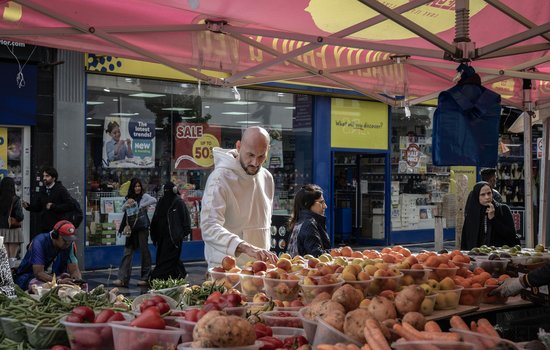Understanding poverty in London starts with understanding the city itself – its people, its housing, and the unique ways it differs from the rest of the UK.
London's population
More than 9 million people live in London - far more than any other city, and more than any other region in England and Wales except for the wider South East.
London is also
- More diverse than the rest of the UK. Almost half of the city’s population (46%) are Black and Minority Ethnic, compared to just 14% England as a whole.
- Home to more migrants. 41% of Londoners were born outside of the UK, compared to 13% of people in the rest of England.
- Younger. One in three Londoners are 20-40 years-old, compared to just 1 in 5 in the rest of England. There are fewer older people in London, too. 12% of Londoners are 65+, compared to 20% in the rest of England.
How is London's population changing?
In the last 10 years, London’s population has grown by 5.7%. This is slightly lower than the rest of England, which has grown by 6.7%.
The level of population change differs greatly across the city. Since 2013, East London’s population has grown by 8.8% - more than any other sub-region of London. Central London has grown the least, by just 1.3%.
The age of London’s population is changing too:
- Fewer young children live in the city. Despite London's overall population growing by over half a million between 2013 and 2023, the number of children aged 0-9 has dropped by nearly 100,000.
- Fewer young adults - the proportion of London's population made up of people in their mid-20s to 30s has decreased.
- More over 50s - At the same time, the proportion of Londoners over the age of 50 has increased slightly.
Housing in London
One of the key ways London differs to the rest of the UK is the cost of housing – across all sectors, it is significantly more expensive to live in London than the rest of the UK. So what type of homes do Londoners live in?
Tenure types of London households over time (1961-2021)
At the time of the most recent Census, 30% of London households lived in privately rented accommodation. This means that the private rented sector makes up a higher proportion of London’s homes than any other point since 1971.
The opposite trend can be seen in the proportion of Londoners owning their own homes and living in social rented housing. A smaller proportion of London households own their own home than at any point since the ‘70s, and a smaller proportion live in social rented housing than at any point since the ‘60s.
These changes are largely driven by two factors. The first is a decrease in the amount of social housing in London. More than 300,000 households in London are on the social housing waiting list. The second is high house prices, meaning many can’t afford to buy their own home.
This leaves many with no option but the private rental market to find a place to live. But rent can be extortionate. The average one-bed on the private market costs almost twice as much in London as in the rest of England.
We explore the link between housing and poverty in our 'What causes poverty?' section.
Monthly rent by sector in London and England (2022/23)
How else does London differ to the rest of the UK?
As well as being younger, more ethnically diverse and more expensive than the rest of the UK, London differs from the rest of the UK in a number of other ways. For example...
Higher education attainment
In general London’s school system performs better than the rest of England, across a number of metrics. For example, 72% of students in London achieved grades 9-4 (A*-C under the old grading system) in GCSE English and Maths in 2023/24, compared to 65.4% in the rest of England.
However, it’s worth noting that this isn’t the case across the whole of London. In Croydon, for example, GCSE attainment is below the national average.
The attainment gap in London is also lower than the rest of England. This means that the gap between disadvantaged students and students who aren’t disadvantaged is lower in London than the rest of England – suggesting that the school system does a better job of levelling out inequality in London than the rest of the country.
Level 3 attainment gap between Free School Meals and non-Free School Meals students at 19 years-of-age (2007/08-2023/24)
Higher levels of unemployment
London has consistently had higher levels of unemployment than the rest of England for the last 20 years.
And while the unemployment rate in the country as a whole has stayed stable since 2022, in London it has increased.
Unemployment rate over time (2005 Q2 - 2025 Q2)
Higher levels of inequality
London is extremely unequal. One way of looking at this is by looking at incomes across the city, as we do in the map below.
It shows the huge disparities in pay across the city. For example in Wandsworth, the average household income is £74,000 - more than 60% higher than in Barking and Dagenham (£46,000).
Gross household income for small areas (MSOA) (2019/20)
There is huge inequalities within boroughs too.
Wandsworth has the highest average income of all London boroughs. But even within this borough, we see a huge difference.
In one of its neighbourhoods, Clapham Common West, the average household income is £108,000. This is almost three times higher than in Roehampton North West, just a few miles away in the same borough.
Now that we've explored London's characteristics, let's move on to poverty. In the next section we explore what poverty is, before moving on to how it affects London.
